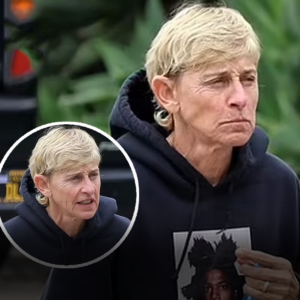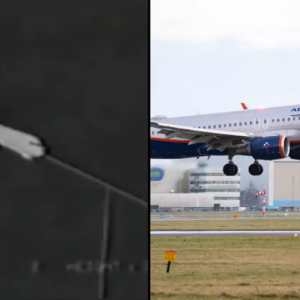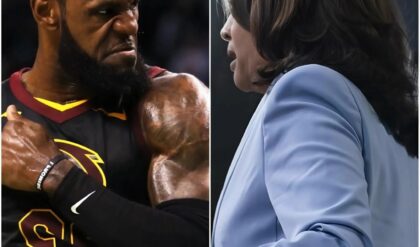The Face of Crimean War in over 35 Magnificent 160-year-old Photos
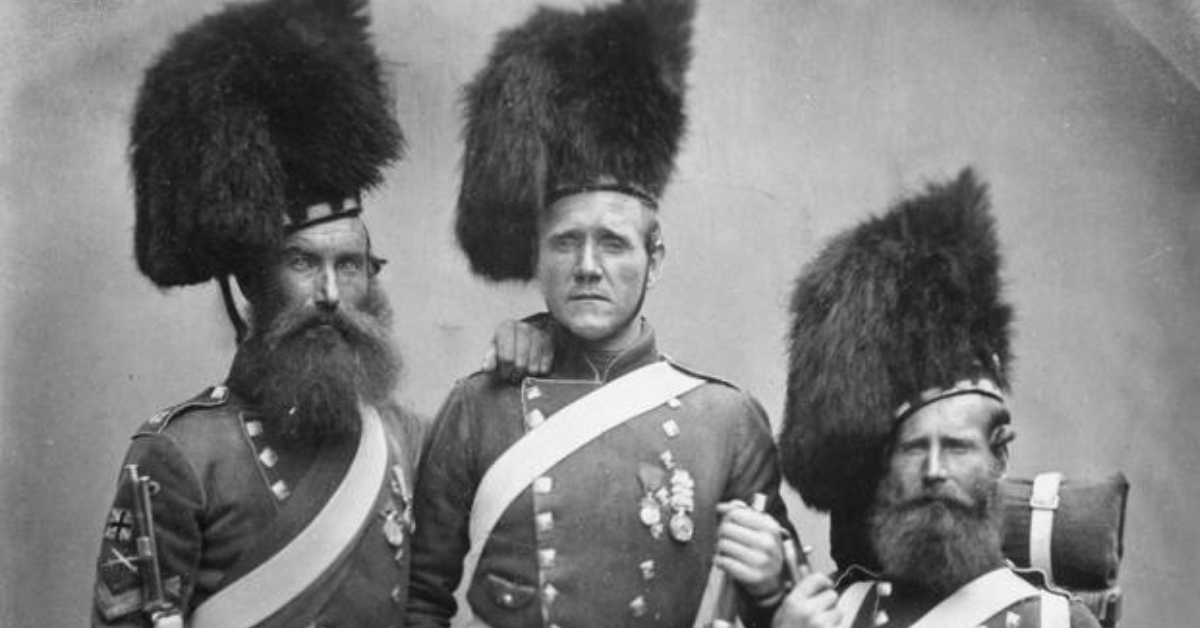
After a longtime peace acquired during the Congress of Vienna in 1815, Europe experienced a relatively peaceful period of history. Foundations of that peace laid a balance among the Great Powers on the continent.
The guarantee of it was the so-called Holy Alliance signed by Russia, Austria, Prussia, and later on France. Any threats toward the establishment were supposed to be suppressed without mercy.
The first decades of the 19th century were marked by a progressive downfall of the Ottoman Empire. Egypt, Greece and few other Balkan states, one by one, seceded from the weakening empire. On the other side was Russia, a gendarme of Europe, earnestly crushing every sign of rebellion.
There was no place for freedom or independence movements in Europe. Ottomans possessed something that the Tsardom of Russia had desired since Catherine the Great: the Dardanelles and the Bosphorus Strait, the gateway to the Black Sea.
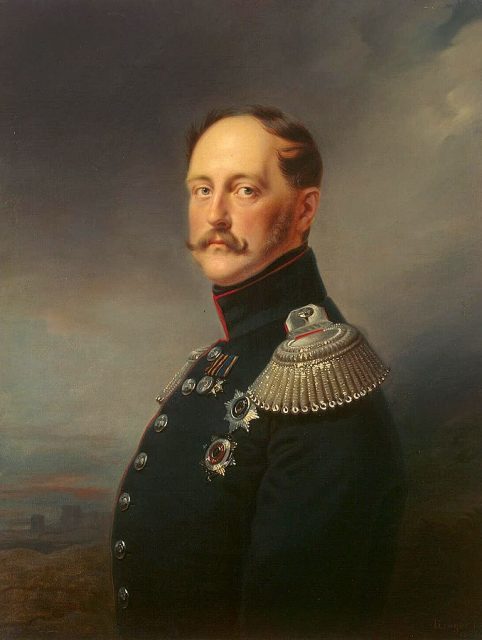
Nicholas I of Russia
Tsar Nicholas I occasionally probed the rest of his Holy Alliance teammates about a partition of the Ottoman Empire. He started to think about it more seriously in early 1853 and made plans about the “possibility” to the point where he offered Crete and Egypt to Great Britain. However, that idea was far beyond the pale for the British. Their interests simply didn’t match.
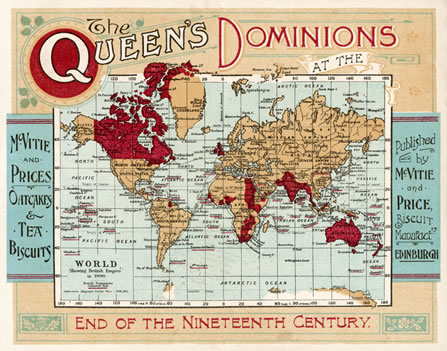
Map of the British Empire under Queen Victoria at the end of the nineteenth century
The Emperor of Russia planned further ahead anyway, despite the reluctant response from the British Crown. His plans hinged on the belief that the only threating alliance for him was the one between France and Great Britain. And after an assassination attempt against Napoleon III in London, relations between the western Great Powers weren’t too friendly.
Nicholas also counted on assistance from either Austria or Prussia, or in the best case both of them. However, all those speculations soon proved to be wrong.
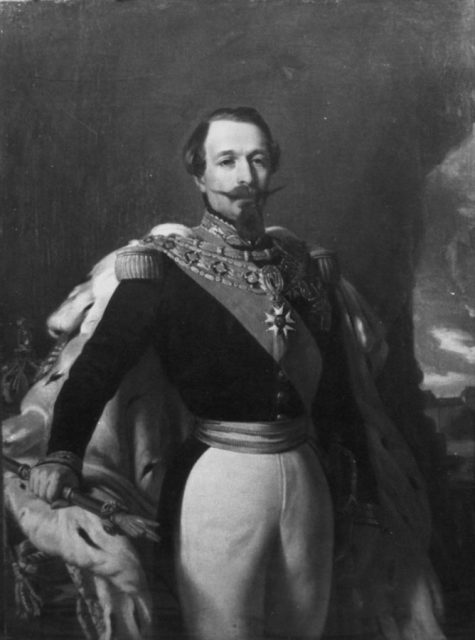
Painting of Napoleon III
“Realpolitik” is always a shocking matter. An agreement between two foes, even if temporary, isn’t something that’s easy to predict. Both France and Great Britain showed the world the power of pragmatism when in 1853, the dispute between France and Russia reached a climax. Both of those countries aspired to be the Protector of the Holy Land in Palestine.
No one backed down and the conflict turned into the war on October 16, 1853. The Ottoman Empire, with promised support from Great Britain and France, declared war on Russia.
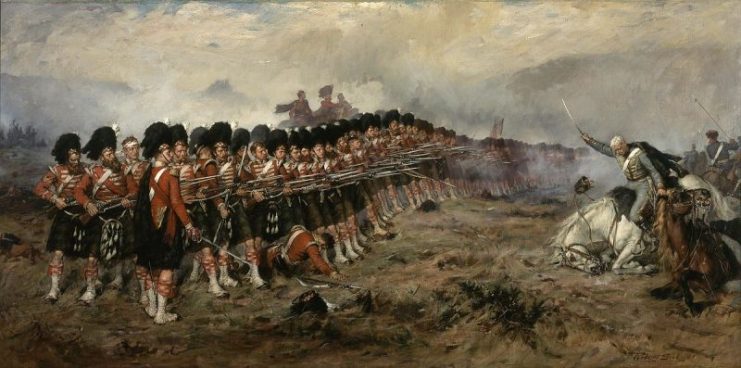
The Thin Red Line by Robert Gibb. Campbell’s 93rd Highlanders repel the Russian cavalry.
The Russian Army advanced in the Balkan Peninsula towards the south. After the victory of the Tsar’s navy in the Battle of Sinop, there was no more time to waste, so both France and Great Britain rushed to prevent the collapse of the Ottoman Empire.
As soon as they appeared in the Mediterranean Sea, Russia declared war on them, still counting on some kind of reaction from Austria and Prussia. These two, however, remained neutral, while silently cheered the enemies of Russia. That’s how the Crimean War started.
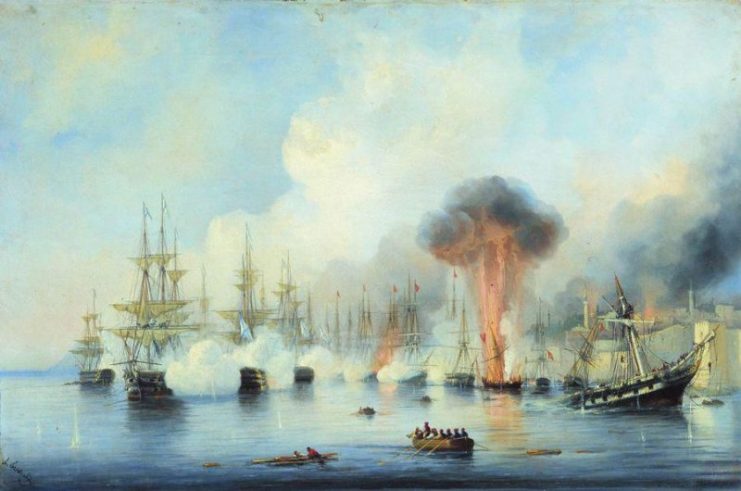
The Battle of Sinop, by Alexey Bogolyubov
The three-year war proved to be groundbreaking in terms of modern warfare. For the first time, science and technology had a huge influence on the battlefield. It’s rather uncommon for attackers to inflict more damage than they receive, but that’s what happened on the Crimea. A good leadership, trained troops, and superior weaponry were more than enough against the Russian mass.
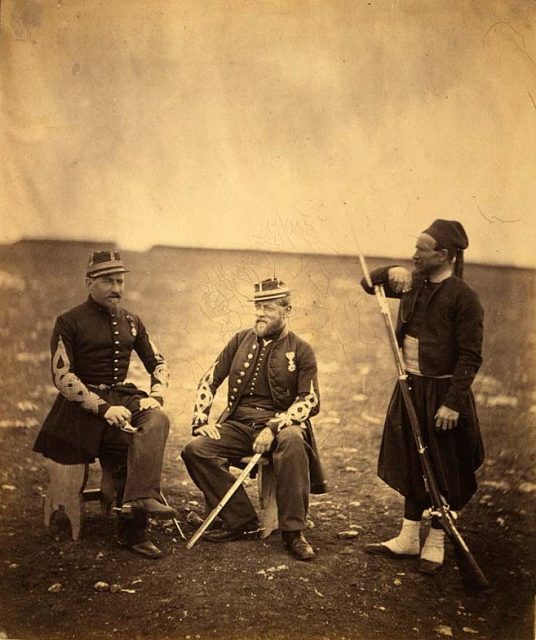
Two French Zouaves officers and one private
Nicholas I lost superiority on the sea, which allowed the Western Great Powers to embark or bombard whatever and whenever they wanted to. This happened in Finland, the Gulf of Finland, the Baltic Sea, in the far east of Kamchatka, and in Odessa and Kerch on the shores of the Black Sea.
It’s worthy to note that Russia won the Battle of Sinop not because they were strong, but because the Ottoman navy was so weak. In 1854, the combined forces of Great Britain, France, Ottomans, and the Kingdom of Sardinia landed on the Crimean Penisula, taking it over without a fight.
The only exception was the city–and stronghold–of Sevastopol, which turned into a legendary siege for the next 11 months. Russian forces tried multiple times to break the siege, without success.
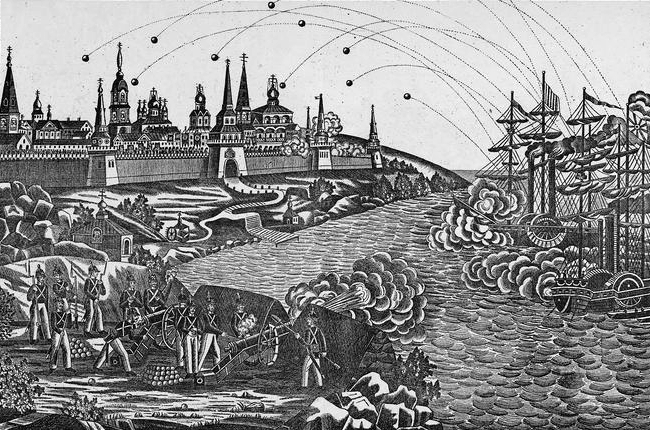
Bombardment of the Solovetsky Monastery in the White Sea by the Royal Navy
Soon a new player entered the stage: winter. In 1854/55 the cold hit Allied troops, who were unprepared for that kind of environment. The entire system of logistics and supply lines collapsed, conditions on the front lines and in hospitals were terrible, and it got worse every day.
The British were so weakened that the whole weight of the fight transferred onto the French and Sardinians. The public reacted instantly, which ignited the beginning of many reforms, resulting in a modernization of the British Army.
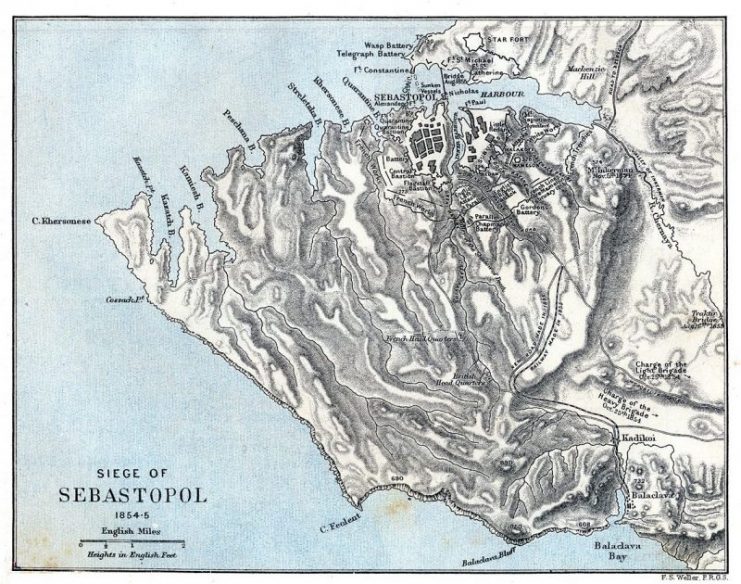
Historical map showing the territory between Balaclava and Sevastopol at the time of the Siege of Sevastopol
The telegraph was crucial in the war. Thanks to this new invention, the governments in Paris and London were able to communicate with field commanders, a feat unheard of ever before. The messages traveled in days, instead of weeks.
Finally, in September 1855, Sevastopol fell and the entire Russian navy stationed there was destroyed. Nevertheless, the war continued for a few more months on a lesser scale, but the outcome was certain and Russia was more willing to negotiate. Tsar Nicholas I died in February 1855, thus avoiding the humiliation of signing the Treaty of Paris a month later.
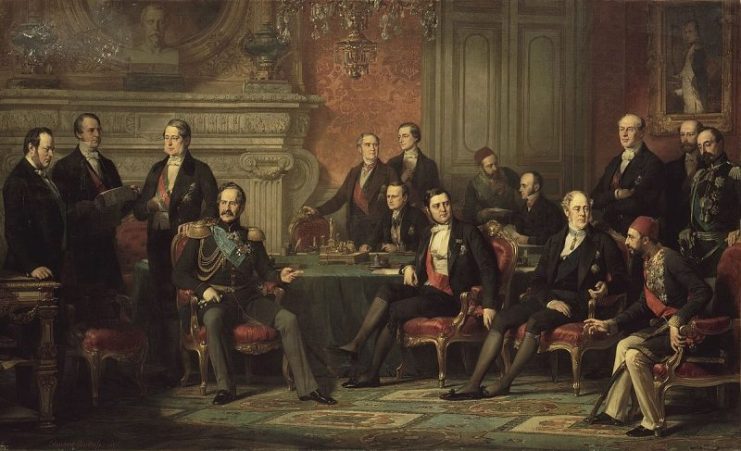
Congrès de Paris, 1856
The Crimean War was the ninth war between Russia and the Ottoman Empire, and resulted in a complete defeat of the Tsardom. As a result, Russia was forbidden from possessing a war fleet, and in addition, building any strongholds in the area of the Black Sea was banned.
The war also exposed that the vast empire of Russia had a troubled economy and underdeveloped technology. Domestic issues like corruption and paralysis of power also had a big impact on the war.
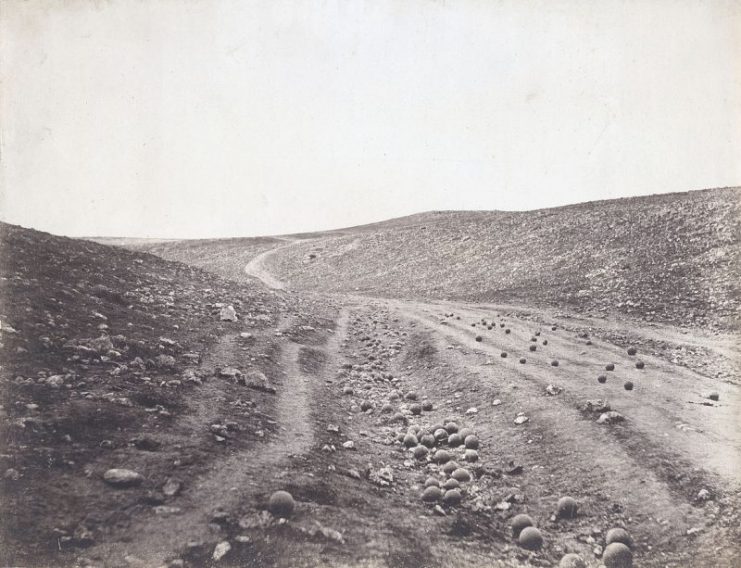
Valley of the Shadow of Death – Dirt road in ravine scattered with cannonballs, by Roger Fenton, one of the most famous pictures of the Crimean War
The Crimean War, although fought in the middle of the 19th century, had a few features of modern wars. Most battles were fought in the manner of position warfare, and it was one of the first conflicts reported by the news, resulting in a growing influence of the public opinion on the war.
The clash of great powers was also a catalyst for future changes. Because of a constant lack of supplies and equipment for soldiers, Great Britain introduced more industrial methods of weaponry production. Afterward, the rest of Europe followed that trend.
Another reflection was the creation of modern nursing by Florence Nightingale. Countless veterans of the Crimean War owed her their lives. She discovered that wounded men died not only because of wounds, but also because of post-traumatic shock, which required simple care.
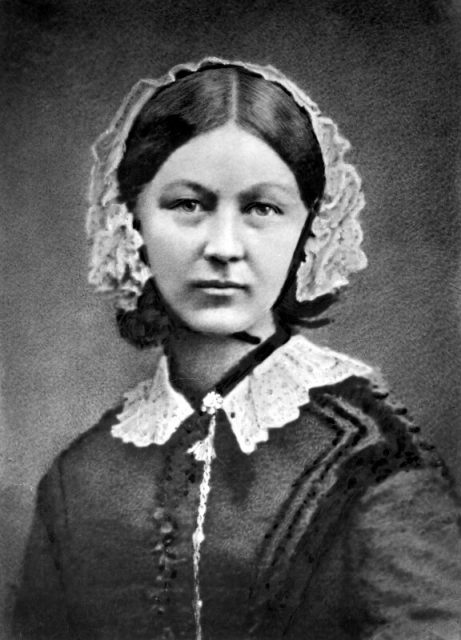
Florence Nightingale
In Russia, the echo of the war was loud. The next Tsar, Alexander II, passed many social reforms, most notably the Emancipation reform of 1861 that effectively abolished serfdom.
The supremacism of Great Britain in the name of Pax Britannica remained unshakeable, and the support of the Crown towards the Ottoman Empire lasted until 1897.
More photos!
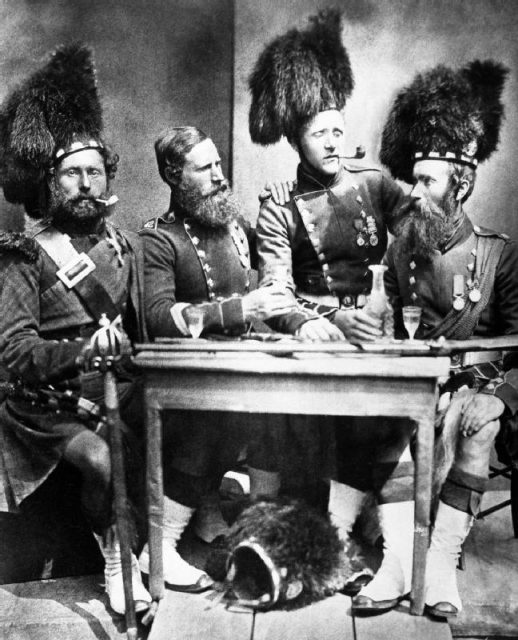
Photograph of Piper David Muir, George Glen, Donald McKenzie and Colour Sergeant William Gardner, 42nd Royal Highlanders, posed grouped round a table with drinks at Aldershot, UK.
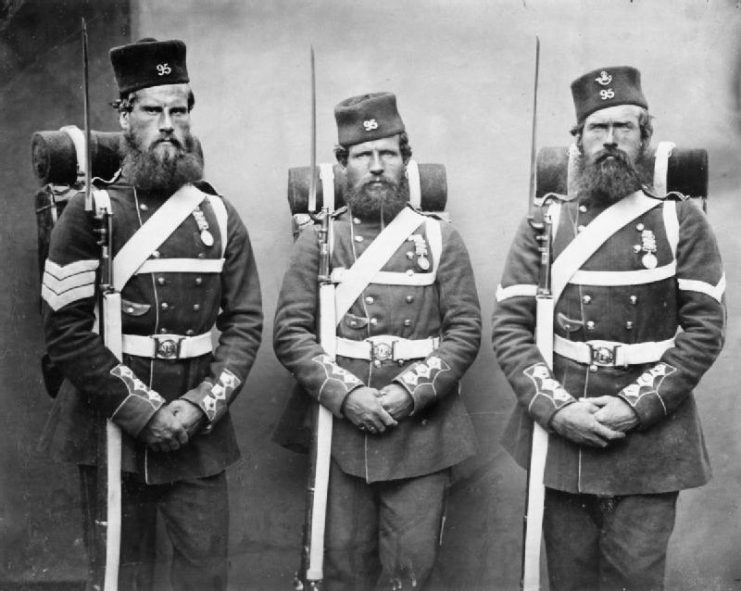
Portrait of Sergeant John Geary, Thomas Onslow and Lance Corporal Patrick Carttay, 95th Regiment (Derbyshire) Regiment of Foot, wearing their packs and equipment. The 95th Regiment won eight Victoria Cross awards in the Crimea
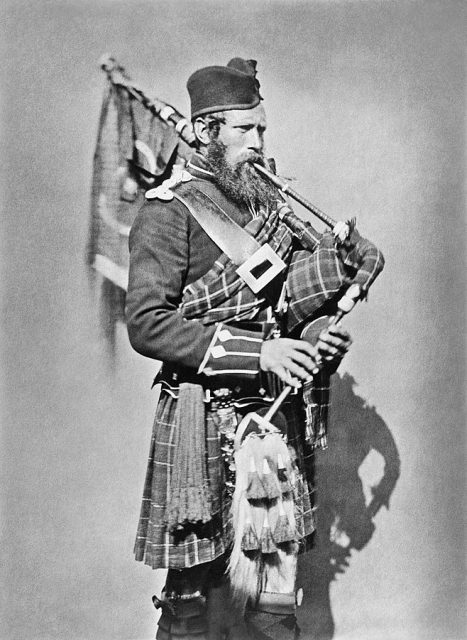
Portrait of Pipe Major John Macdonald, 72 Highlanders, with bagpipes.
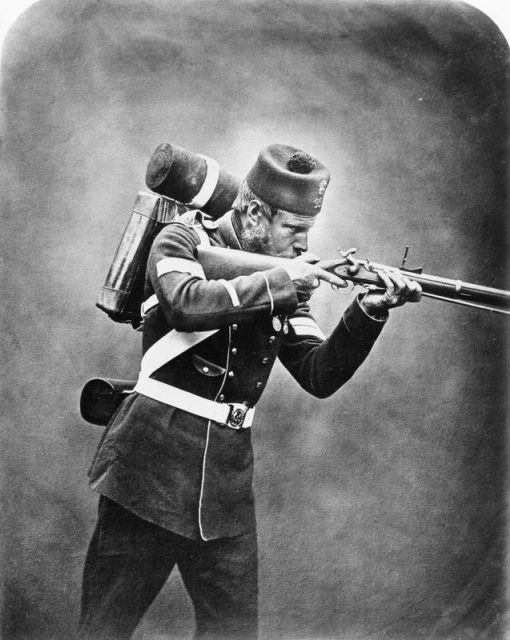
Portrait of Corporal James Tinn, 95th Regiment, wearing pack and aiming his rifle.
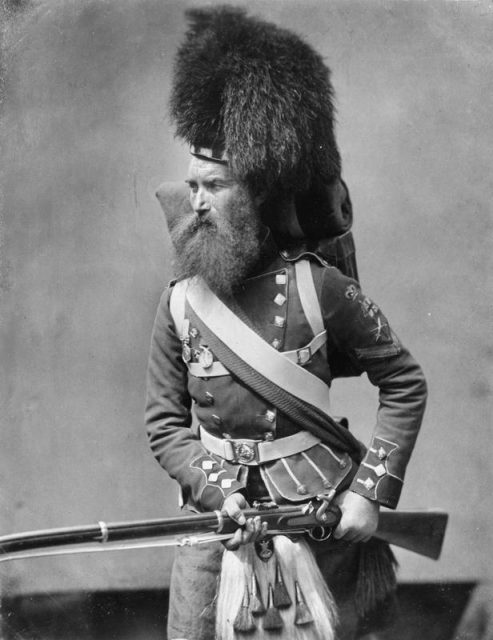
Colour Sergeant William Gardner, 42nd Royal Highlanders.
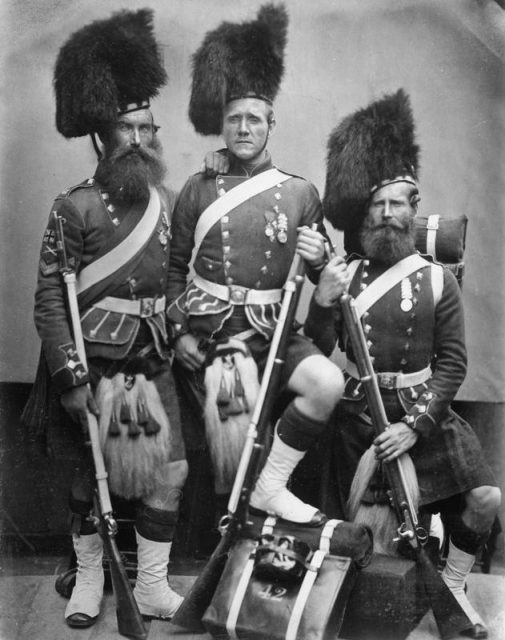
Colour Sergeant William Gardner, Donald McKenzie and George Glen, 42nd Royal Highlanders with their equipment.
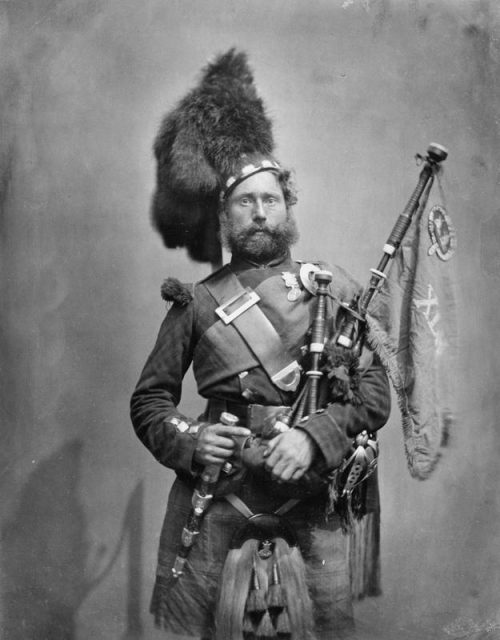
Piper David Muir, 42nd Royal Highlanders.
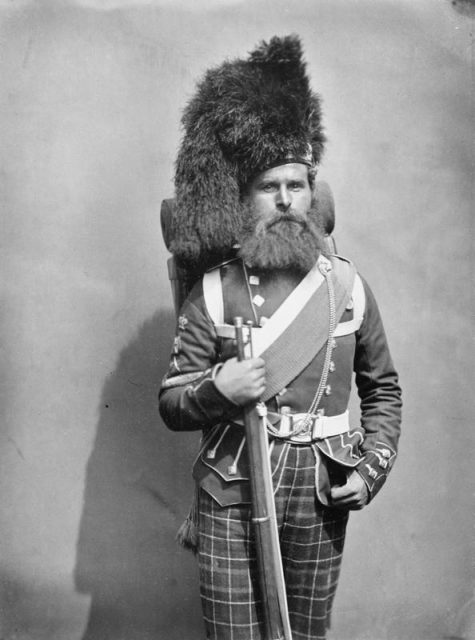
Colour Sergeant Andrew Taylor, 42nd Highlanders.
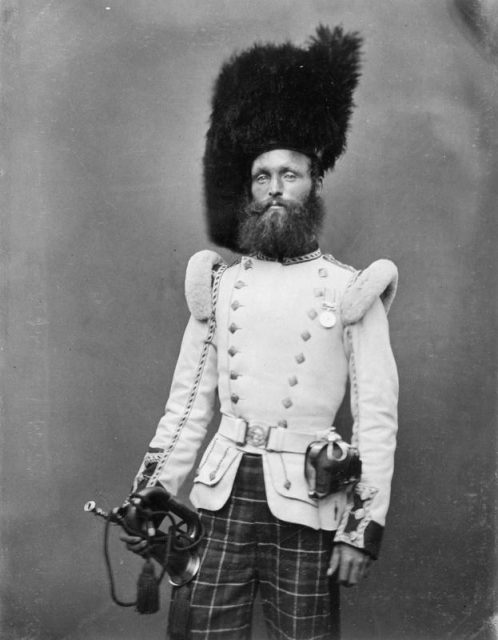
Trumpeter John Rennie, 72nd Highlanders.
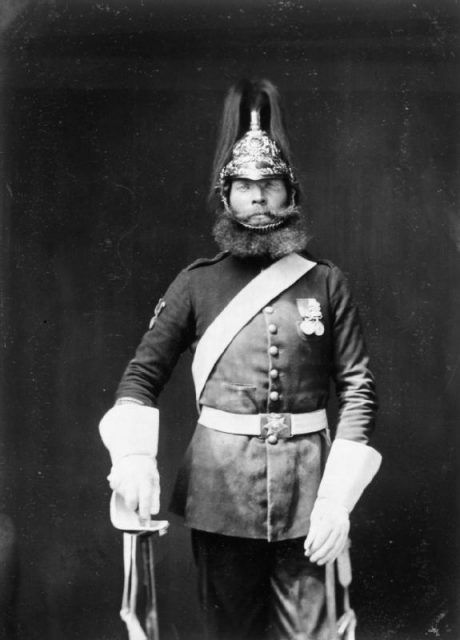
Rough Rider Michael MacNamara, 5th Dragoon Guards, one of the soldiers presented to HM Queen Victoria at Aldershot on their return from the Crimea.
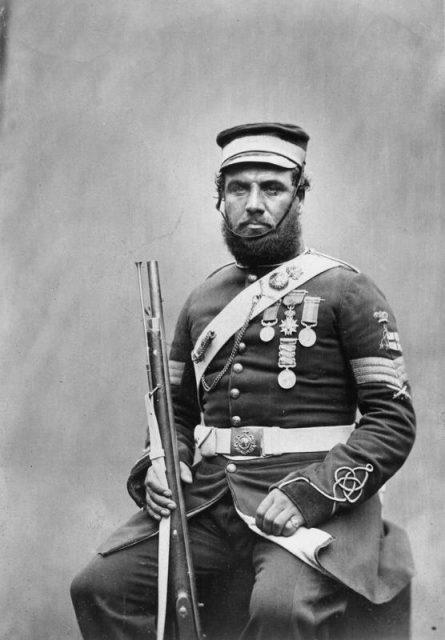
Colour Sergeant Joseph John Stanton, Royal Sappers and Miners.
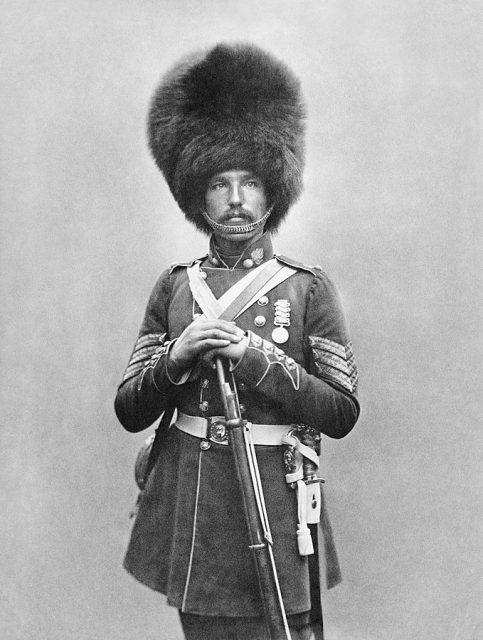
Colour Sergeant William Powell, Grenadier Guards.
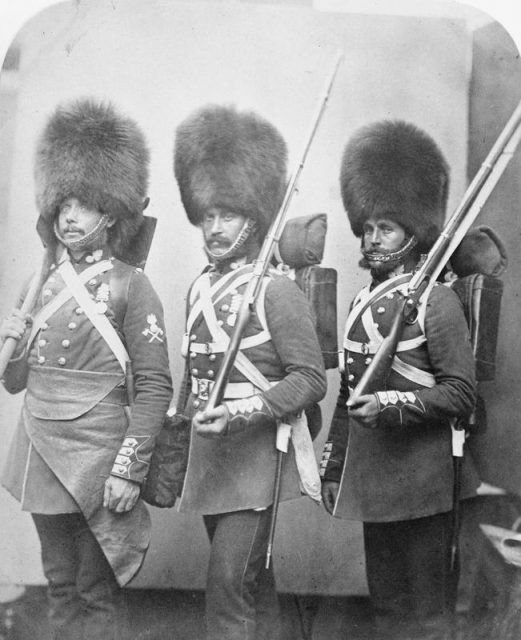
Charles Manners, William Webster and Henry Lemmen of the Grenadier Guards.
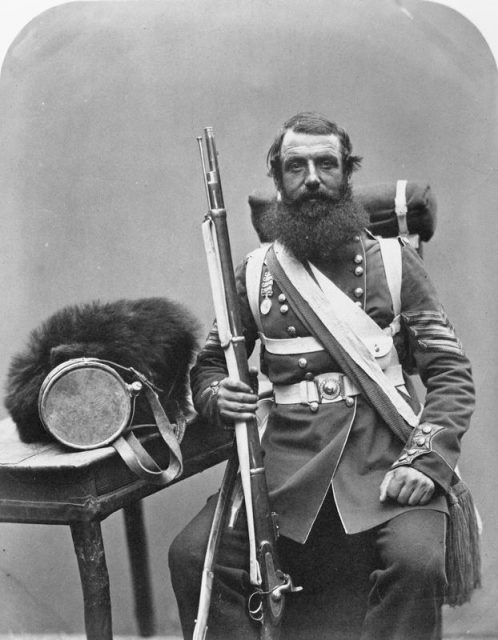
Portrait of Sergeant William Knapp, Coldstream Guards, with his pack and equipment.
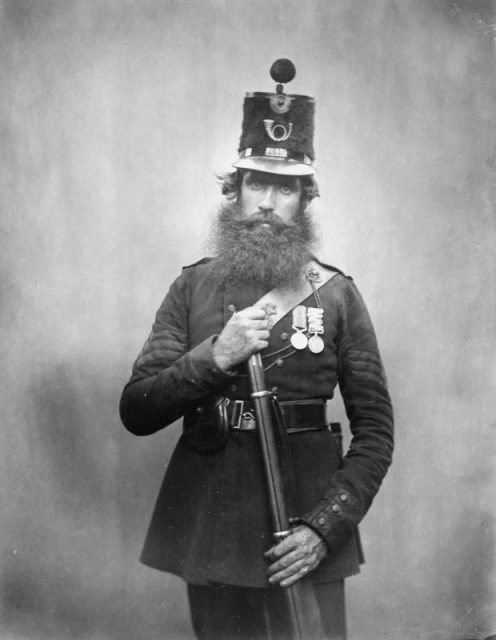
Sergeant Carroll, Rifle Brigade.
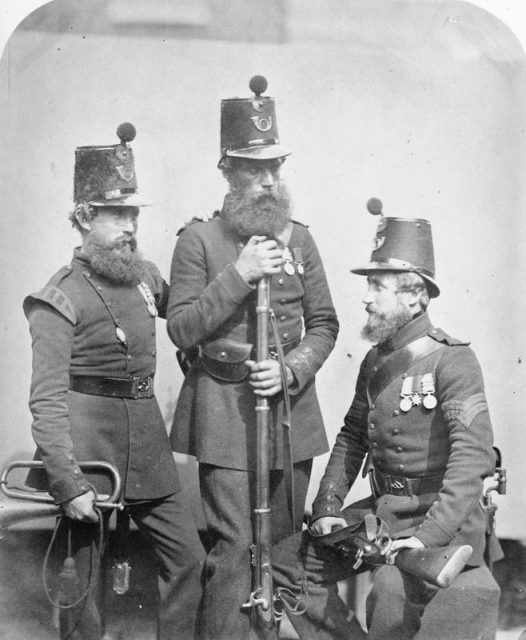
Trumpeter Robin, Private Hill and Corporal Wiseman, of the Rifle Brigade with equipment.
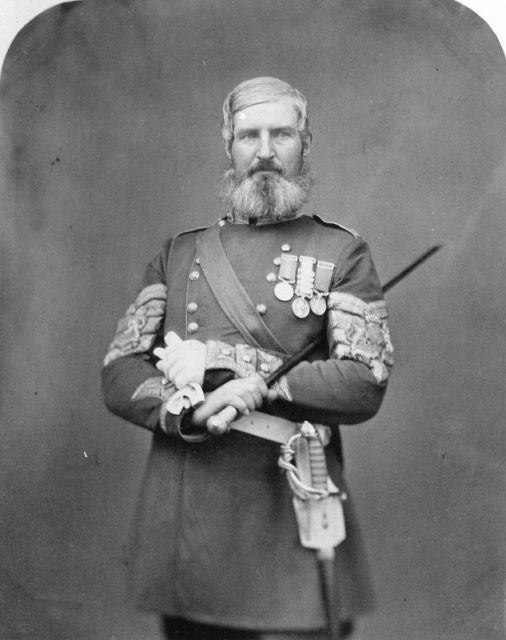
Sergeant Major Edwards, Scots Fusilier Guards.
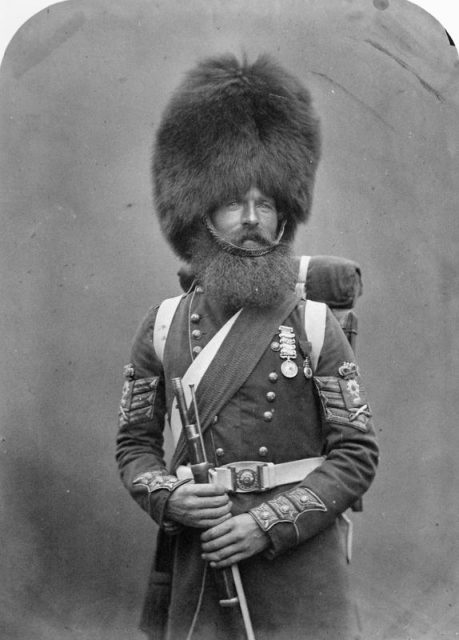
Colour Sergeant William McGregor, Scots Fusilier Guards.
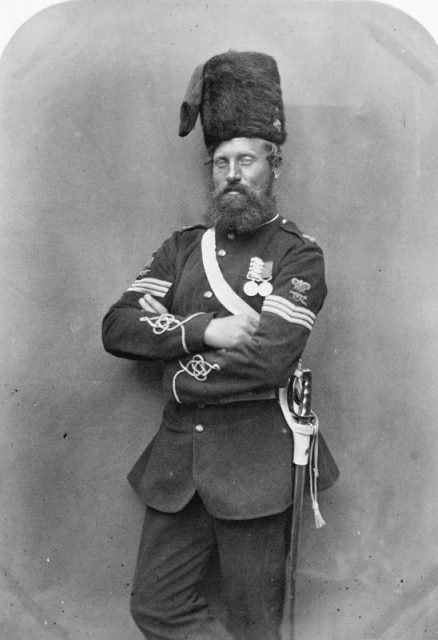
Sergeant Robert Glasgow, Royal Artillery.
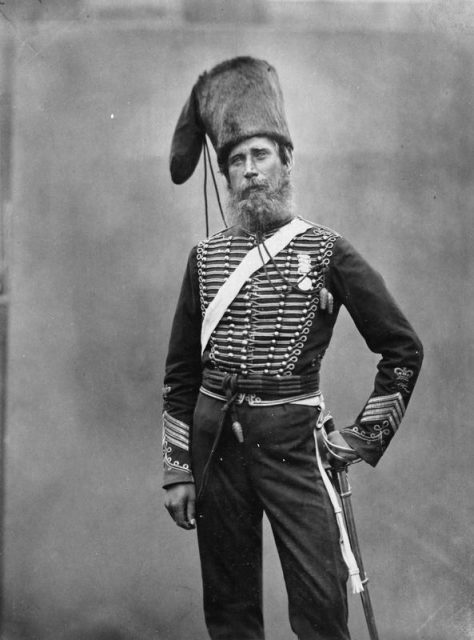
Sergeant Major James Beardsley, Royal Horse Artillery.
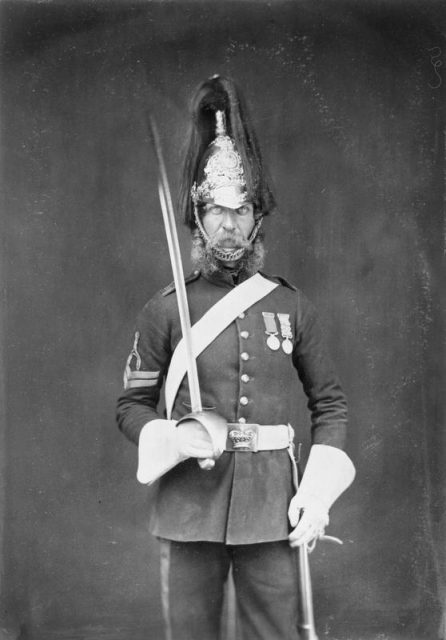
Rough Rider Robert Droash, 1st Royal Dragoons, seen by HM Queen Victoria at Aldershot.
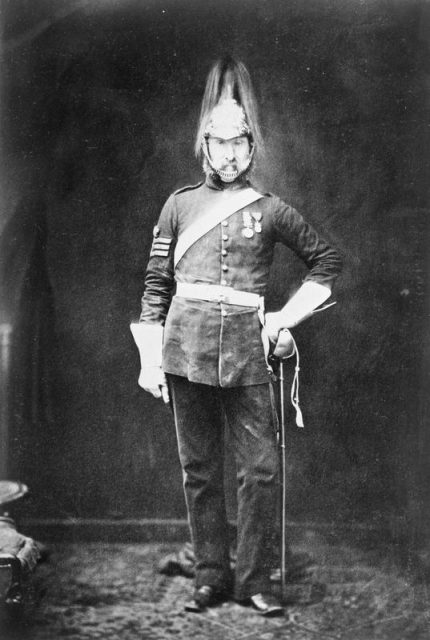
Sergeant Major William Stewart, 5th Dragoon Guards, seen by HM Queen Victoria at Aldershot.
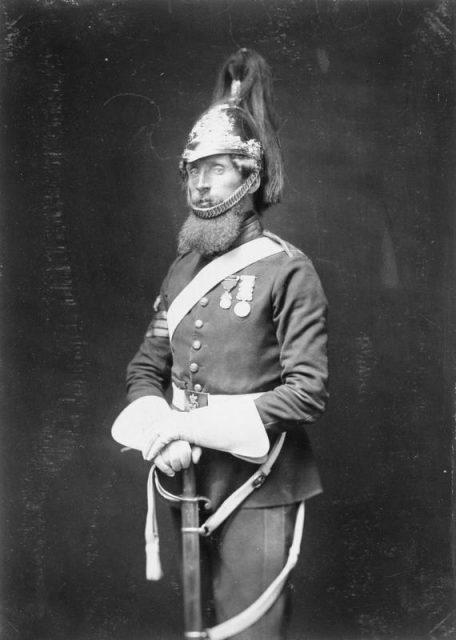
Sergeant Major Michael Baisley, 1st Royal Dragoons, seen by H.M. Queen Victoria at Aldershot.
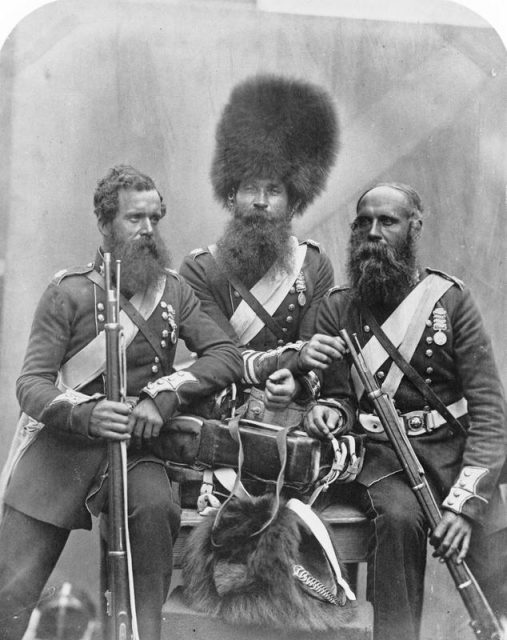
Coldstream Guards. Left to right, Joseph Numa, John Potter and James Deal.
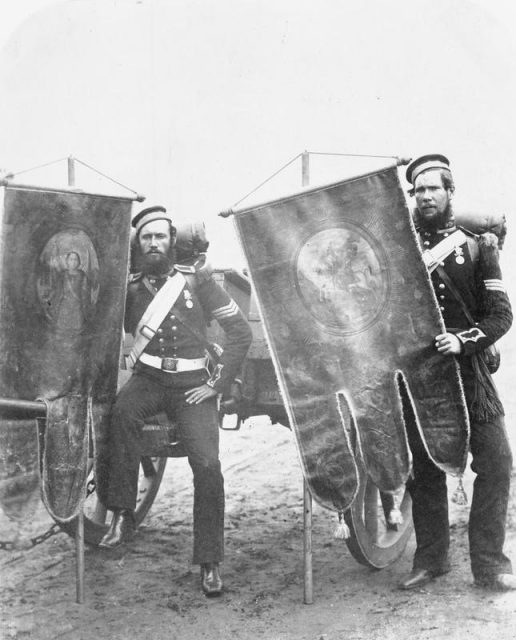
Company Sergeant William Christie and Sergeant Samuel McGifford, 4th Bn., Royal Artillery, with captured Russian banners which were brought back to England as war trophies, 1856.
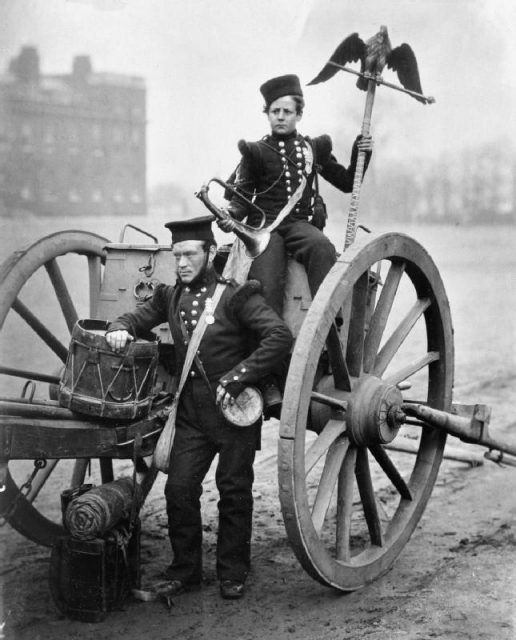
Trumpeter George Gritten, 11th Bn. and Trumpeter W. Lang, 12th Bn., Royal Artillery holding a Russian eagle flagstaff, which was brought back to England as a war trophy, 1856.
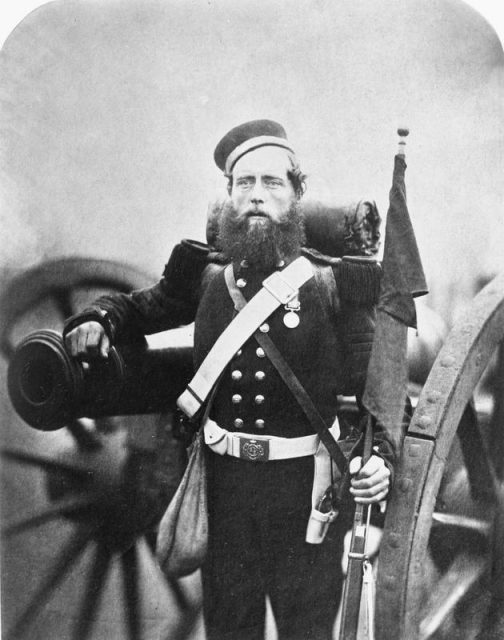
Sergeant William Rupel, 5th Bn. Royal Artillery, standing by a gun (possibly captured at Sevastopol).
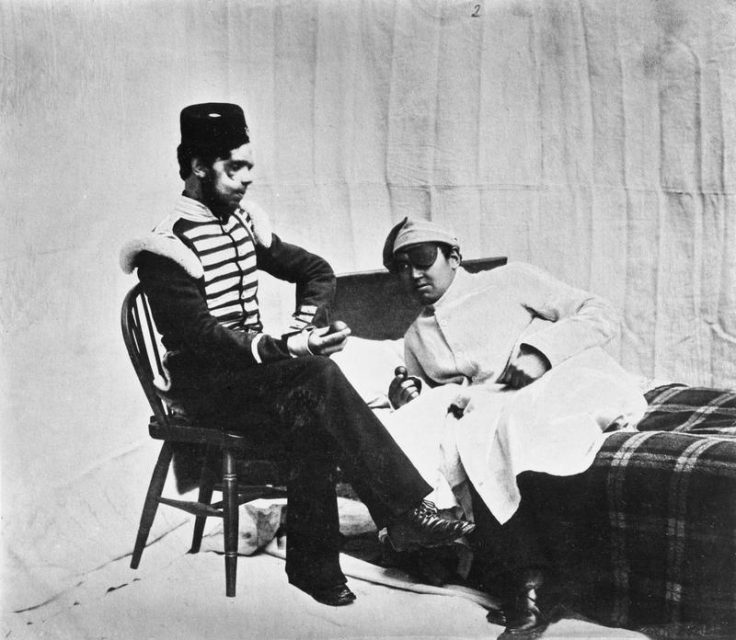
Private Jesse Lockhurst, 31st Regiment and Private Thomas O’Brien, 1st Royals, wounded soldiers seen by H.M. Queen Victoria at Chatham Hospital.
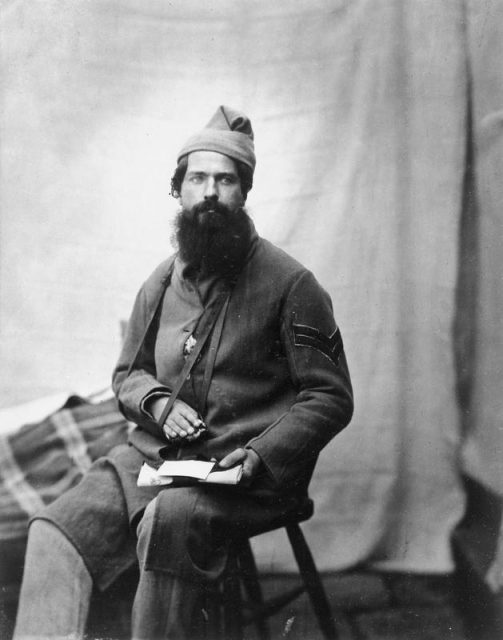
Corporal Michael McMahon, 1st Royals, a wounded soldier seen by H.M. Queen Victoria at Chatham Hospital.
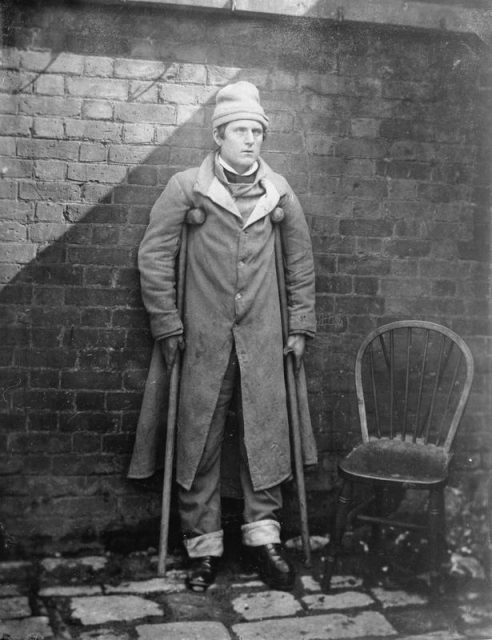
Thomas McRaving on crutches while recovering from his wounds at Chatham Hospital.
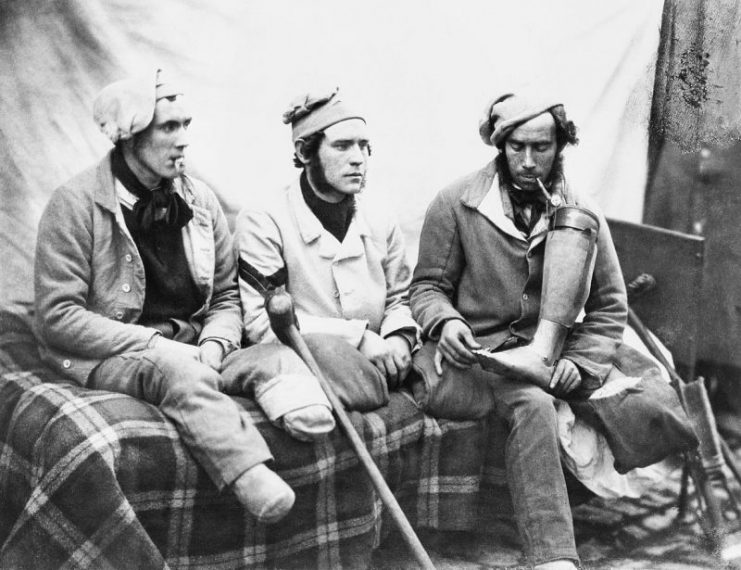
Crimean War casualties with amputated legs who were seen by HM Queen Victoria when she visited Chatham Hospital. Left to right – William Young, Henry Burland and John Connery. John Connery is holding his artificial leg.
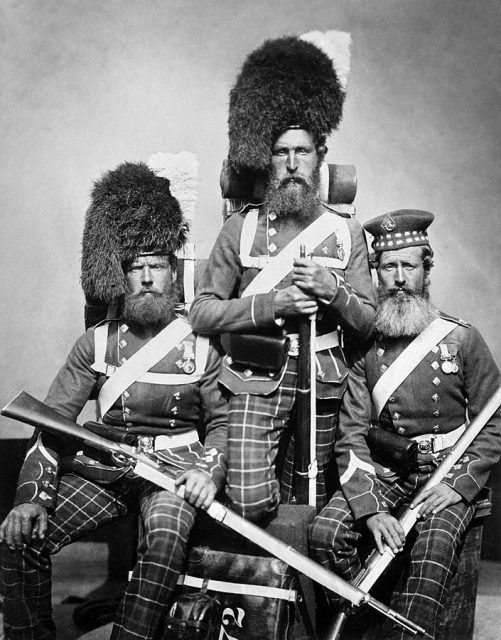
Men of 72 Highlanders who served in the Crimea: William Noble, Alexander Davison and John Harper.
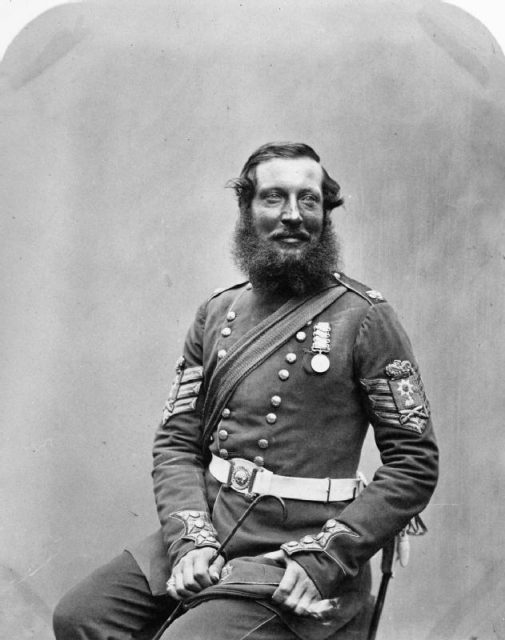
Portrait Colour Sergeant Absolom Durrant, Coldstream Guards.
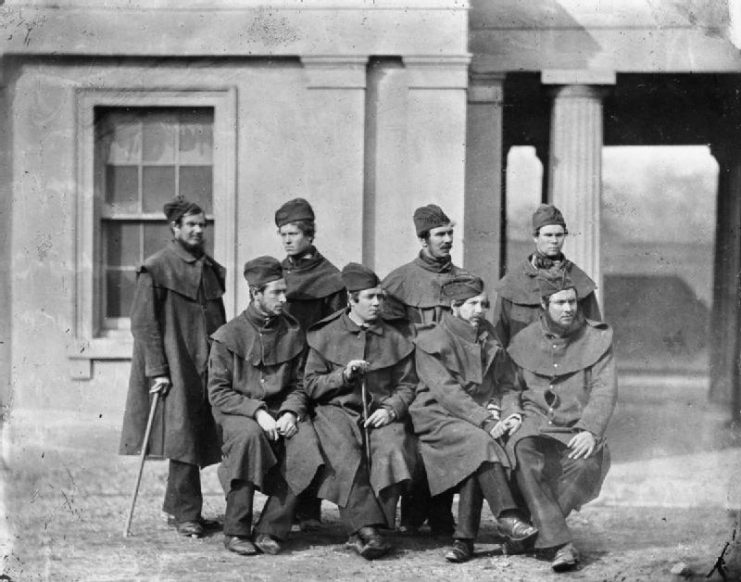
A group of Scots Fusilier Guards convalescing from wounds received in the Crimea at the Guards Barracks in London. Left to right: Private G. Biddlescombe Private Francis Trainer Private George Watt Private William Jay Private Edward Little Private J.F. Lilley Private William McPherson Private James Morgans
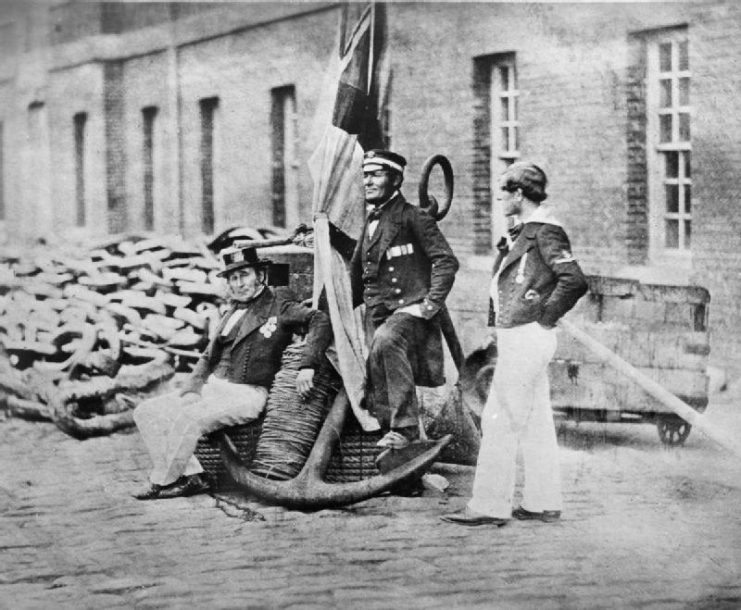
Royal Navy seamen who served in the Crimea: Admiral’s Coxswain Charles Brooks, HMS BRITANNIA; Boatswain John Starling, HMS SAMPSON; Leading Seaman W Pengelly, HMS SANSPAREIL, pose with an anchor and Royal Navy ensign.
News
The “Red Zone” – Land Still Abandoned Due to the Dangers Left by the First World War
The “Red Zone” – Land Still Abandoned Due to the Dangers Left by the First World War In the aftermath of the First World War, large areas of northeast France were left in ruin. Years of constant siege warfare along…
Before Becoming a Big-Name Actor, Richard Todd was a Paratrooper Who Fought at Pegasus Bridge
Before Becoming a Big-Name Actor, Richard Todd was a Paratrooper Who Fought at Pegasus Bridge Photo Credit: 1. Sgt. Christie, No. 5 Army Film & Photographic Unit / Imperial War Museums / Wikimedia Commons / Public Domain 2. Silver Screen…
The Potsdam Giants: A Prussian Infantry Regiment Of Nothing But Very Tall Soldiers
The Potsdam Giants: A Prussian Infantry Regiment Of Nothing But Very Tall Soldiers Frederick William I inspecting his giant guards known as The Potsdam Giants, a Prussian infantry regiment No 6, composed of taller-than-average soldiers. Frederick William I of Prussia,…
Ellen DeGeneres cuts a very casual figure as she drives around in her Ferrari
Ellen DeGeneres cuts a very casual figure as she drives around Montecito in her Ferrari… while preparing to embark on her stand-up tour Ellen DeGeneres cut a very casual figure as she made her way around Montecito on Tuesday morning. The…
“I’m heavily tattooed and keep getting rejected for jobs – it’s not fair”
Heavily tattooed OnlyFans star, 23, with multiple piercings on her FACE slams TJ Maxx for rejecting her for a job – accusing retailer of unfairly judging her dramatic look A woman has accused TJ Maxx of rejecting her for a…
All 75 passengers killed in plane crash after pilot let his chirldren control the plane
Praying, turning the engine off by accident and letting KIDS play with the controls: The worst blunders made by pilots before a crash revealed Every time we board a plane, we put our lives in the hands of the pilot….
End of content
No more pages to load



